“CQR” is a good guide to the complex pricing structure of large and half cents. It also contains Robinson’s advice for collectors. Note that the 20th edition is the final edition as CQR is no longer published.
As part of our on-going commitment to numismatic education, we are happy to offer EAC member Craig Sholley’s book on early US minting technology. Why should you buy this book? We can think of no better words than those in the foreword by noted author John W. Dannreuther:
“Using the available documents and depictions of minting equipment, Craig has coalesced his decades of analyzing the mint’s records and inner workings into this work. The reader will experience a vivid depiction of mint technology and how the improvements over the years changed the coinage. From using only manpower for nearly every machine to the mechanization fueled by the Industrial Revolution, Sholley presents a timeline of the people involved and their contributions to the innovations.”
We would also like to note that Craig has donated the copyright to EAC, so all proceeds from the sale of his book will go to support club activities.
W.R. Eckberg, R.L. Fagaly, D.E. Fuoss and R.J. Williams. 2014
The first book published by EAC, it covers all aspects of the grading of early copper coins.
Profusely illustrated with high quality color photographs, it addresses sharpness and net grading of half cents and large cents, and sharpness grading standards of federal and state coppers coined under the Articles of Confederation. Sharpness standards for half and large cents are given by type with all major types fully illustrated in grades from AG to MS.
Where there are varieties within a type that show different wear characteristics (e.g., Chain cents, 1794 half cents, Liberty Cap large cents of different dates), all are fully illustrated in grades where their wear characteristics differ from the standard pattern. The differences between the traditional technical grading standards used in EAC and the less rigorous standards used commercially are illustrated. The differences between technical and market grading are explained.
In addition, there are sections devoted to the history of grading, proper handling and preservation of early coppers, detection of counterfeits and alterations, and the effects of die states and different varieties on grading. Finally, there is a section on the pricing of coppers graded by EAC standards as opposed to those graded by commercial standards.
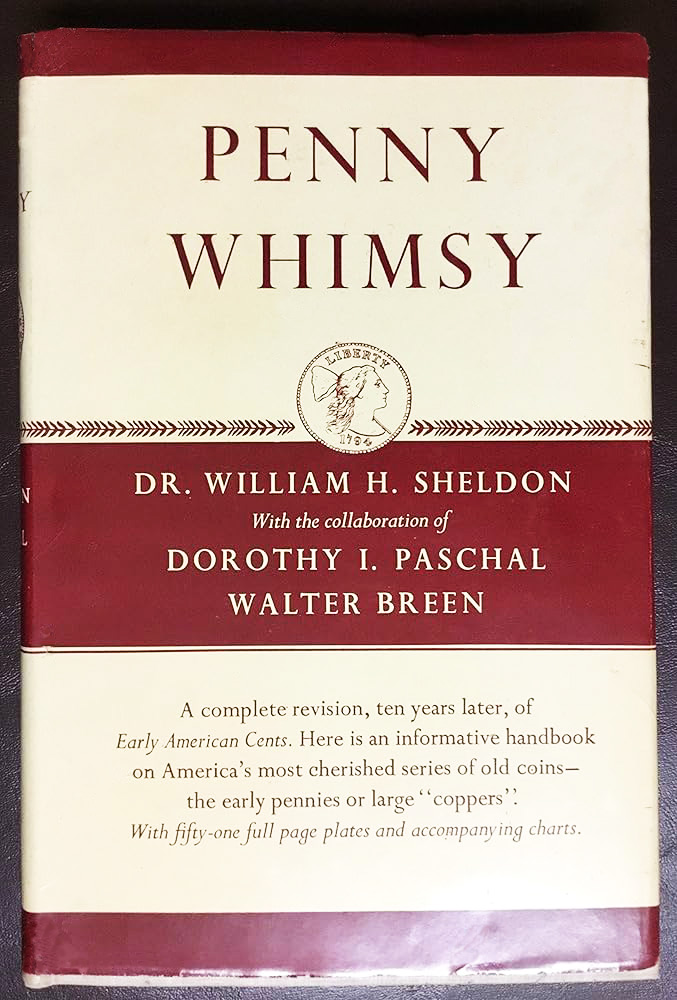
William Herbert Sheldon, 1958
Long the “bible” of early copper collectors, this book is an update of a 1949 work by Sheldon, Early American Cents. Varieties are well described and placed in an emission sequence that has been significantly updated since the book was published. Varieties are illustrated by photographs, but they are of uneven and often mediocre quality. Though much of the information about the coins is badly out of date, Sheldon’s musings on related topics still make an interesting read. This is the book that popularized the notion of a “condition census” or listing of the finest known examples of a variety. It also introduced the 1-70 “quantitative” grading scale that has been greatly expanded upon and misused by dealers in recent years. Long out of print, this book has been republished and reprinted several times, often with updates. All of these editions are readily available from numismatic literature dealers.
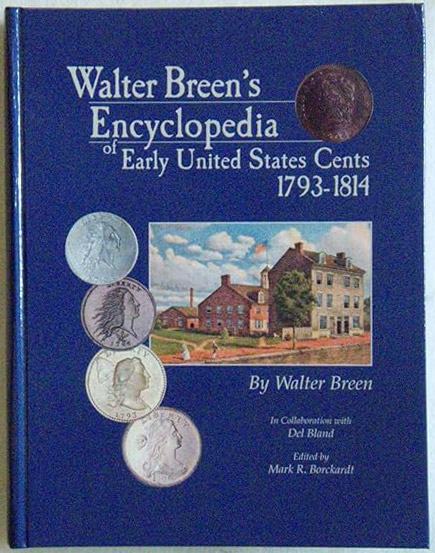
Walter Breen 2000, Bowers and Merena Galleries, Wolfeboro, NH.
Decades in development, this large (857 pages, plus plates), posthumously published tome, edited by Mark Borckardt, contains very extensive condition census data compiled by Del Bland. Each variety is illustrated by large, usually good quality, black and white photos. There is an updated emission sequence, and this book, like Breen’s half cent book, gives a wealth of information about the history of early large cent collecting, errors, methods of manufacture, etc. Out of print, the book is usually available from numismatic literature dealers.
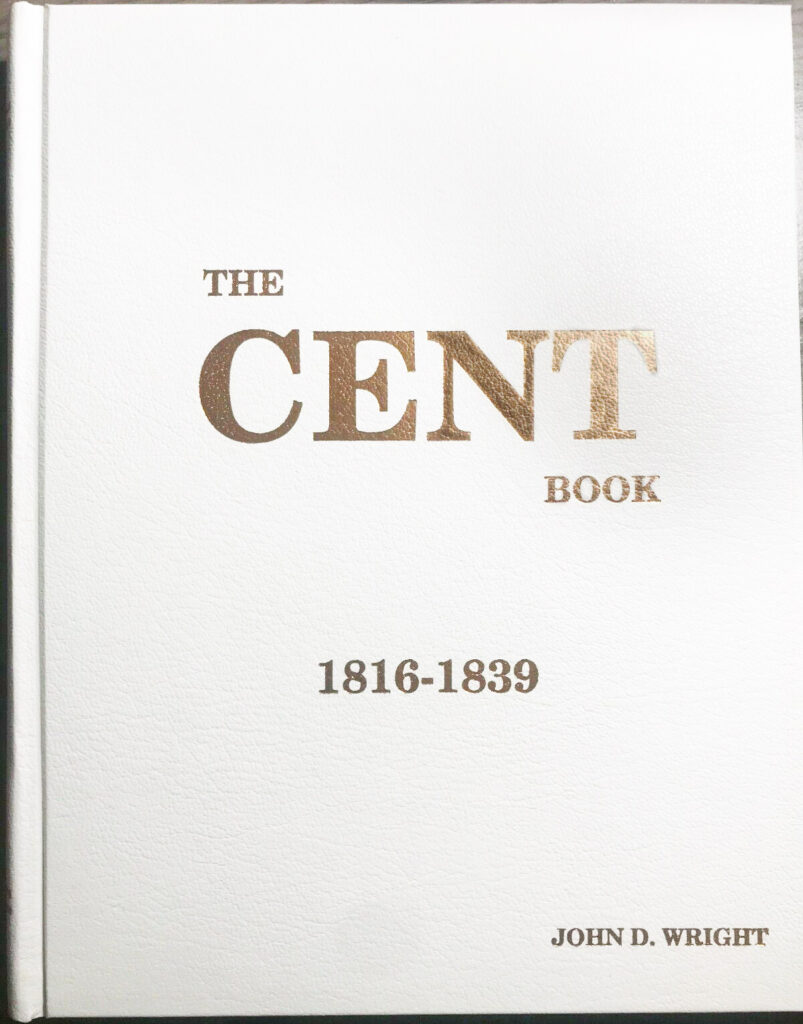
John D Wright, 1992. Privately published.
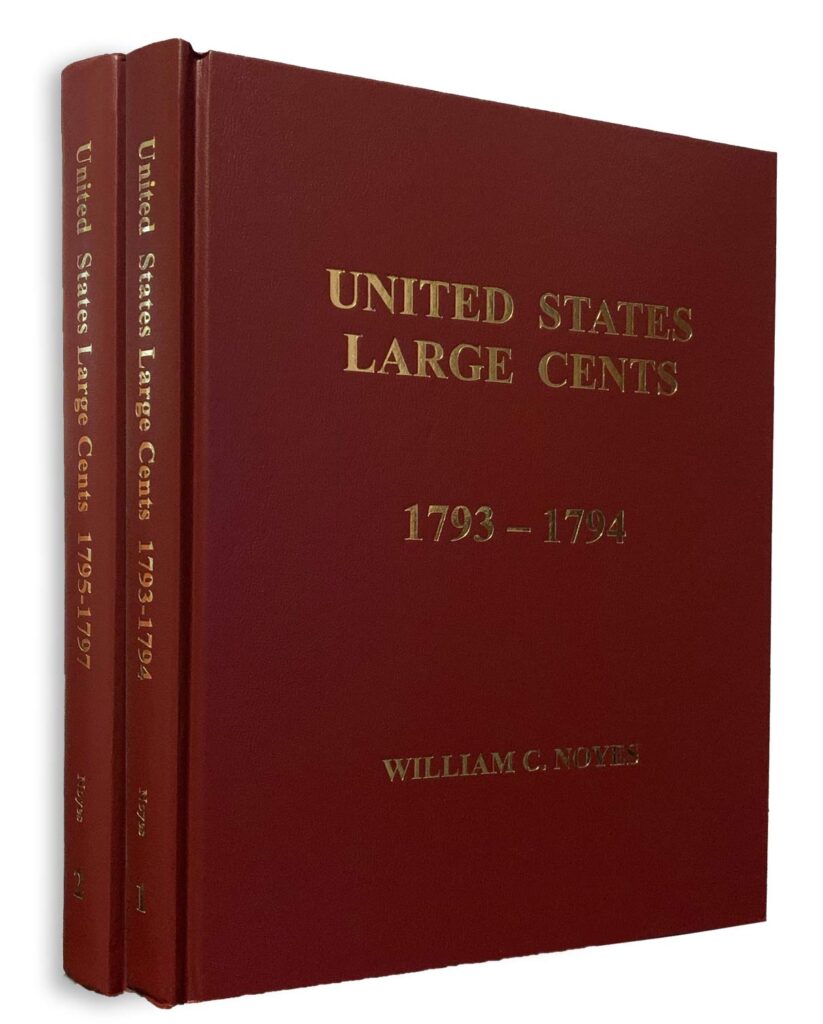
W.C. Noyes, 1991. Litho Technical Services, Bloomington, MN.

W.C. Noyes, 2006, 2007. Digital Dynamics, Ann Arbor, MI.

W.C. Noyes, 2013
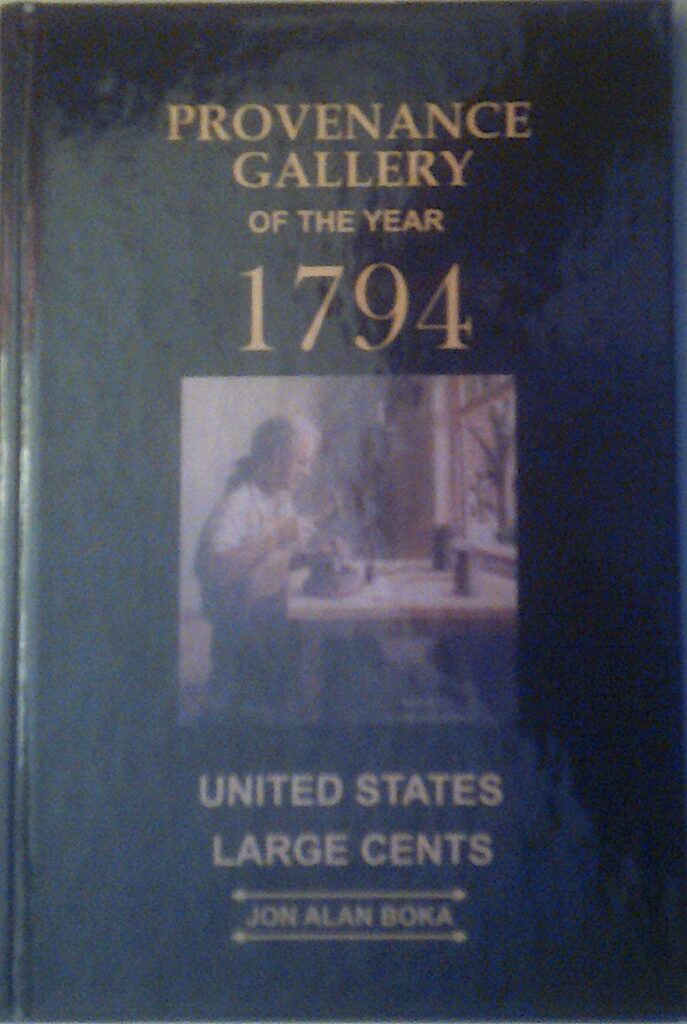
J.A. Boka, 2005. Falcon Books, San Ramon, CA.
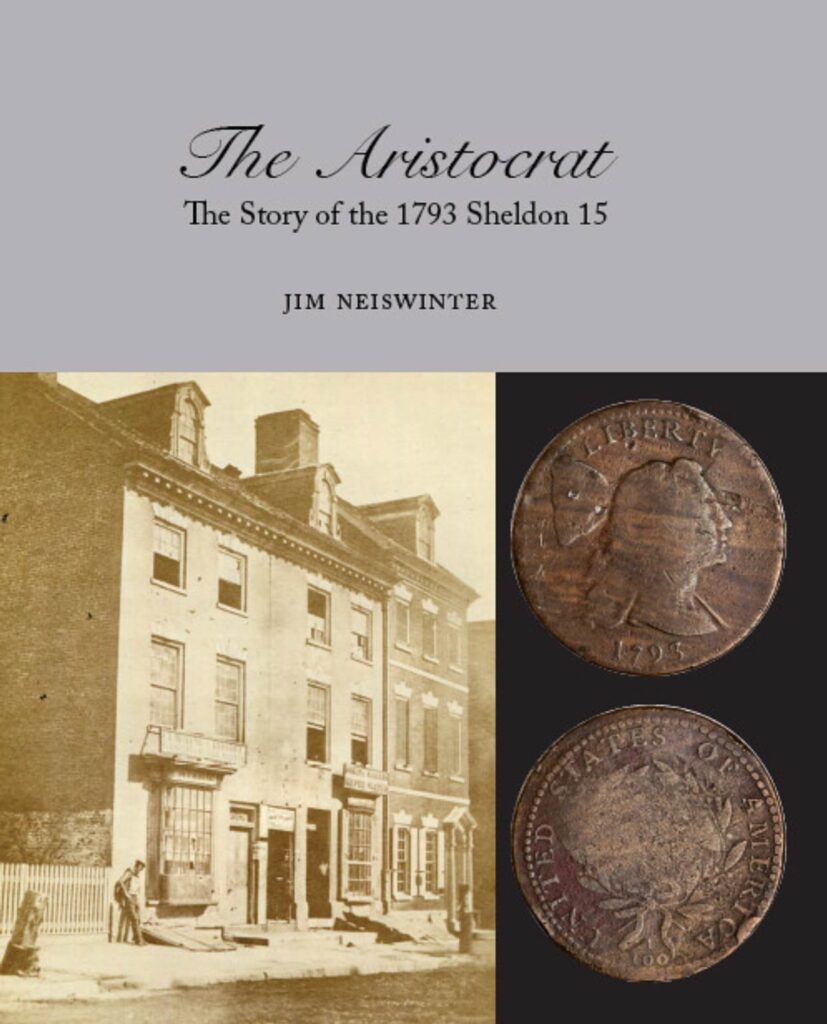
Jim Neiswinter, 2013. Privately published.
J.R. Grellman, 2020. M&G Publications.
At 464 pages with over 100 photographs, this is the authoritative reference on late date large cents. Print edition available from: Bob Grellman, jrgrellman@gmail.com.
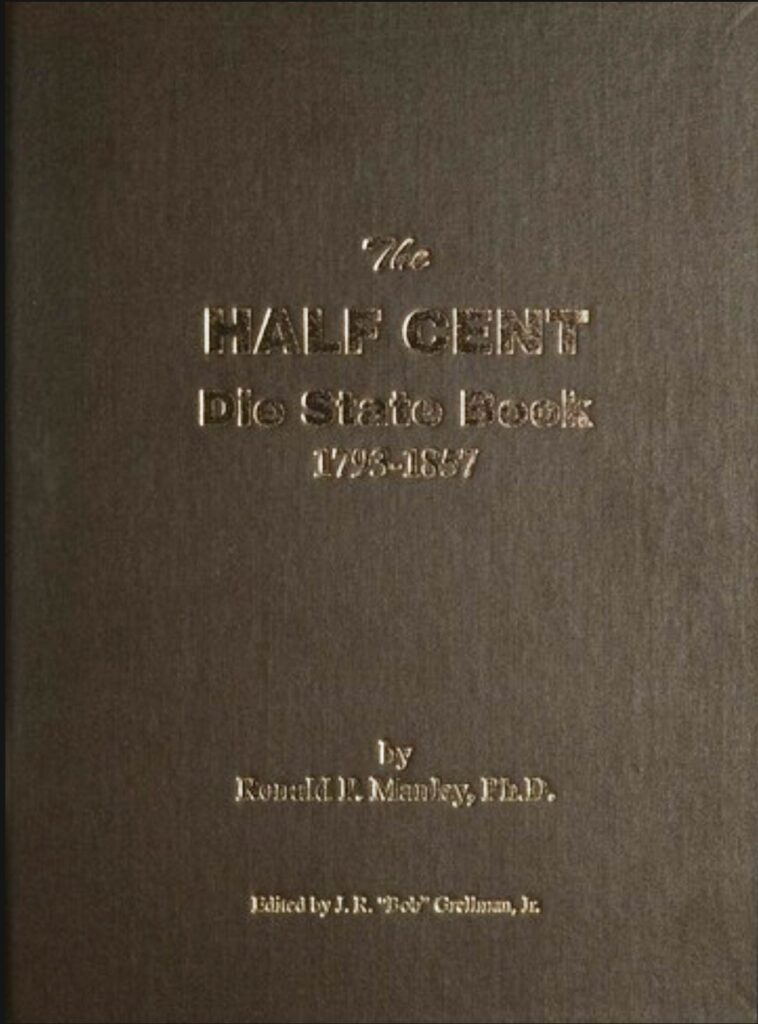
R.P. Manley, 1998. Privately published.
Currently, the “definitive” reference on half cent die states and their relative availabilities, and containing the most up-to-date emission sequence, this 300-page book is illustrated with large black and white photos of each non-proof variety; it supplants the Cohen reference. Out of print, copies are frequently available from numismatic literature dealers.
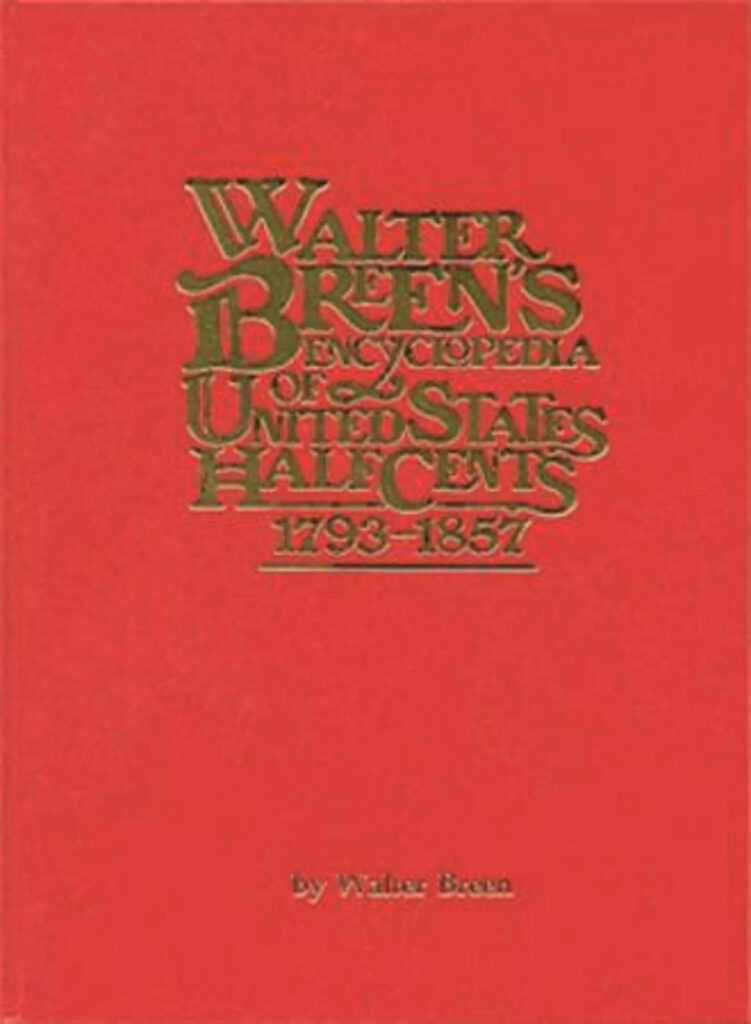
Walter Breen, 1983. American Institute of Numismatic Research, South Gate, CA.
Like his large cent book, Breen’s 501-page (plus color plates) book was in development for about 30 years. This magnum opus on half cents is the only half cent book to feature color photos of a choice example from each date. Though its die state, condition census and rarity information are obsolete, the book is still useful for all of the collateral information it provides on the history of half cent collecting and the early Mint and the technical information about the manufacture of these coins. This now out-of-print book did much to popularize half cent collecting. It is available from numismatic literature dealers.
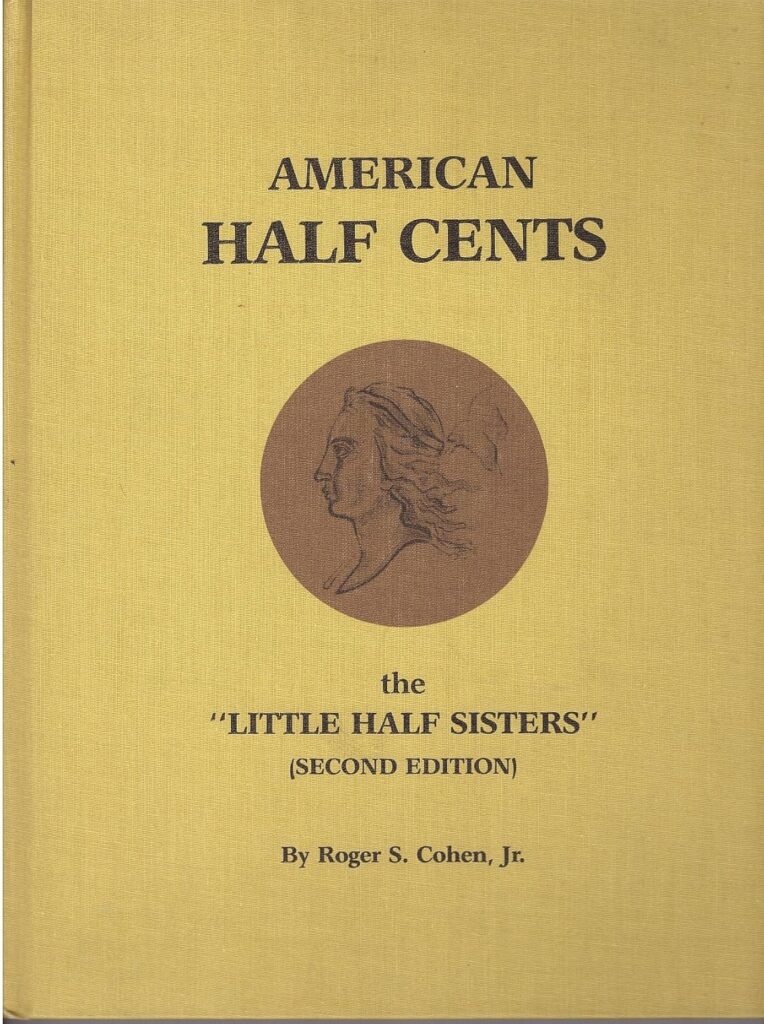
Roger S. Cohen, Jr, 1982. Wigglesworth & Ghatt, Arlington, VA.
An updating of Cohen’s first edition, published in 1971, this 131-page book was hugely influential in its time, giving the variety nomenclature that is still used. However, its usefulness has been replaced by Manley’s book, below. “Wigglesworth and Ghatt” were the names of Cohen’s dog and cat, respectively.
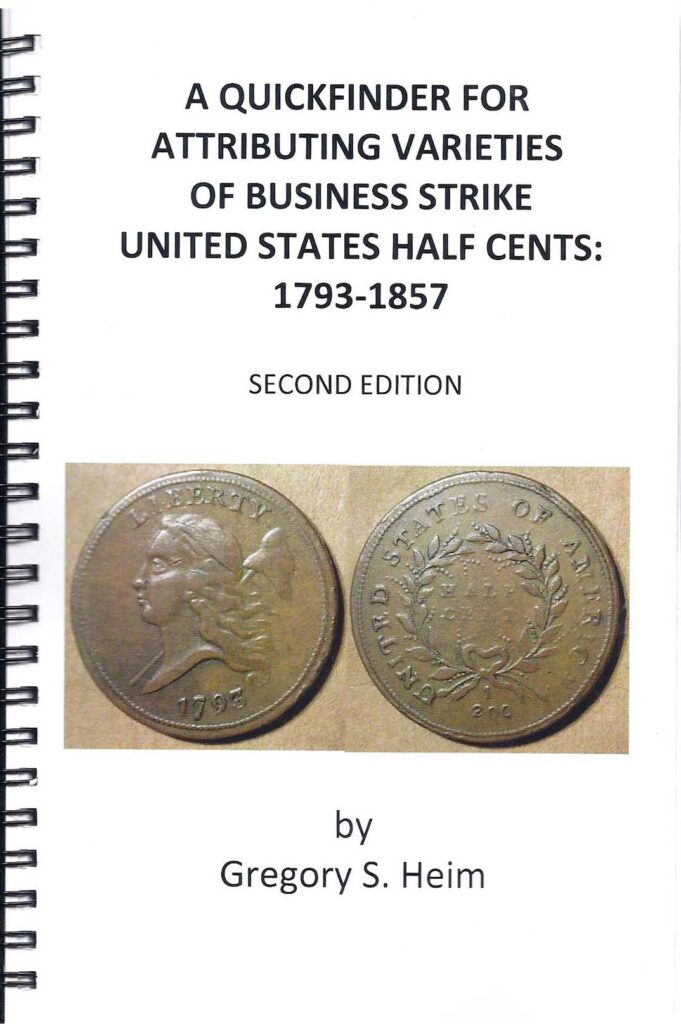
Gregory S. Heim, 2013. Privately published.
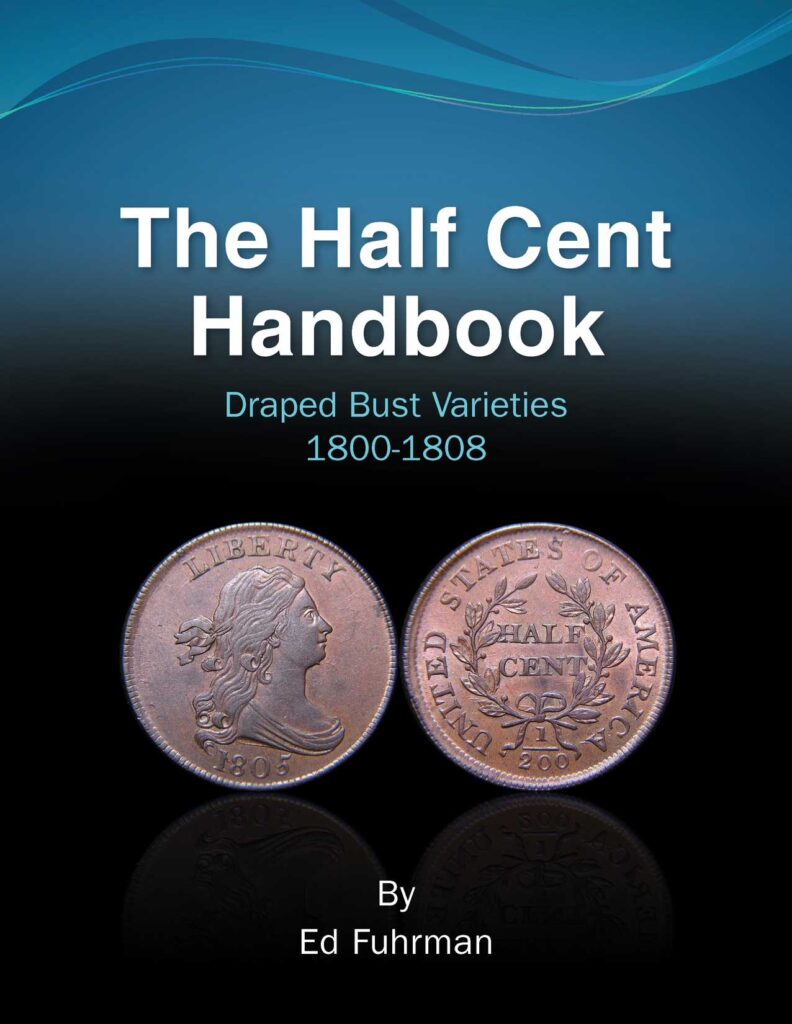
Ed Fuhrman, 2021.
This is the first volume in a series of six books written on U.S. Half Cents.
The book contains updated and valuable information on Draped Bust Half Cent die varieties, die states, grading, attribution, rarity, prices, cherry picking tips, and a whole lot more. This 177 page book is hardcover, full color, and produced with the finest quality materials including a smyth sewn binding. A must have for novice and advanced collectors alike.
To obtain copies contact Ed Fuhrman: Guitarman68@optonline.net
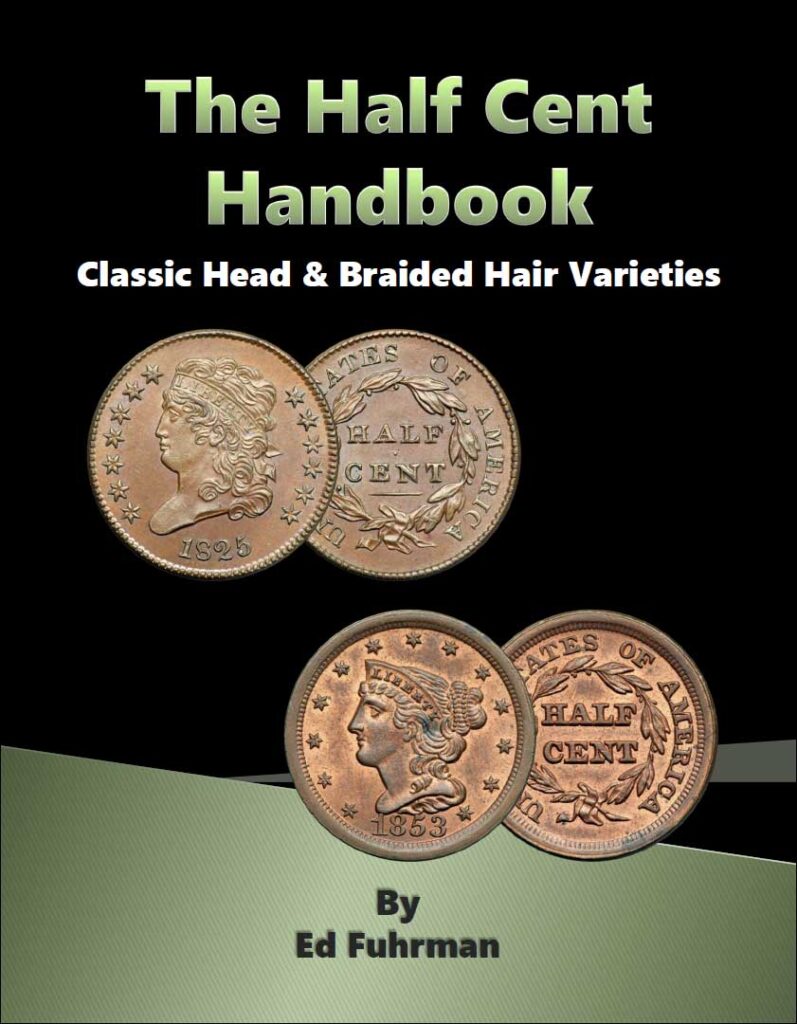
Ed Fuhrman, 2021.
This is the second volume in a series of six books written on U.S. Half Cents.
This is a 157 page hardcover book with beautiful full color photos and a sewn binding. The book contains updated and valuable information on Classic Head and Braided Hair Half Cent die varieties, die states, grading, attribution, rarity, prices, cherry picking tips, and a whole lot more. A must have for any collector. Available directly from the author!
To obtain copies contact Ed Fuhrman: Guitarman68@optonline.net
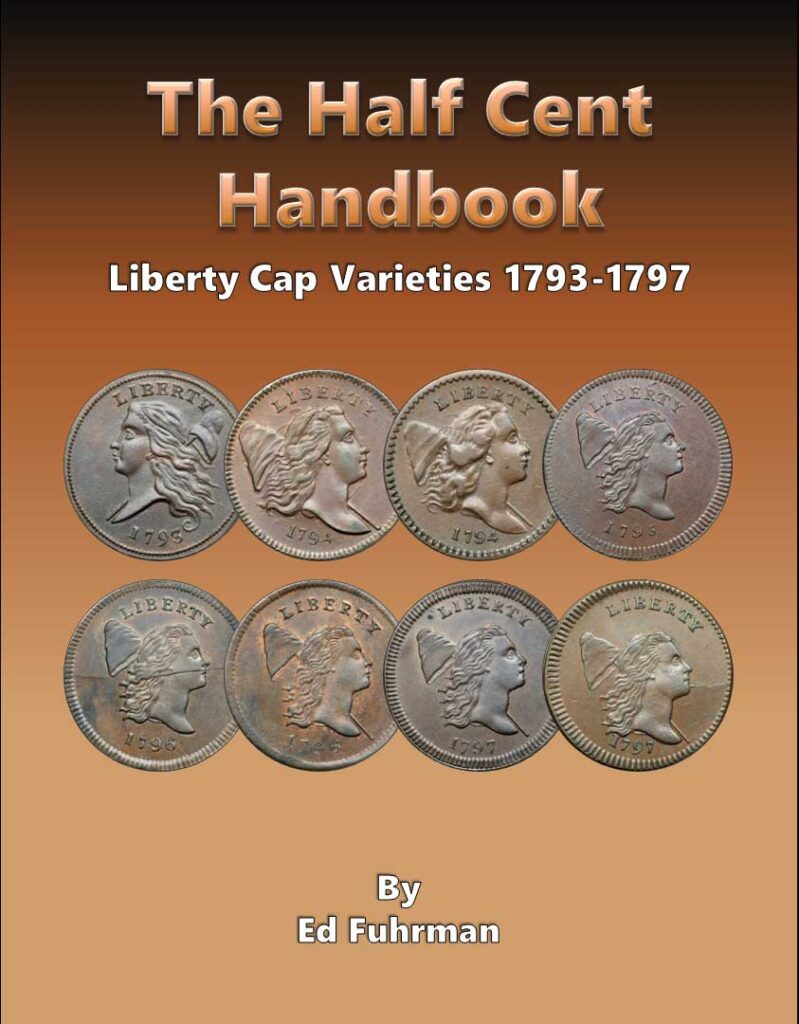
Ed Fuhrman, 2022.
This is the third volume in a series of six books written on U.S. Half Cents.
This book is over 250 pages and comes fully loaded with updates and valuable information on die varieties, die states, grading, attribution, rarity, prices, cherry picking tips, new discoveries, and a whole lot more. Everything is laid out in a clear and concise manner with full color photos. The book is hard cover, full color, smyth sewn binding, and top quality in every way.
To obtain copies contact Ed Fuhrman: Guitarman68@optonline.net
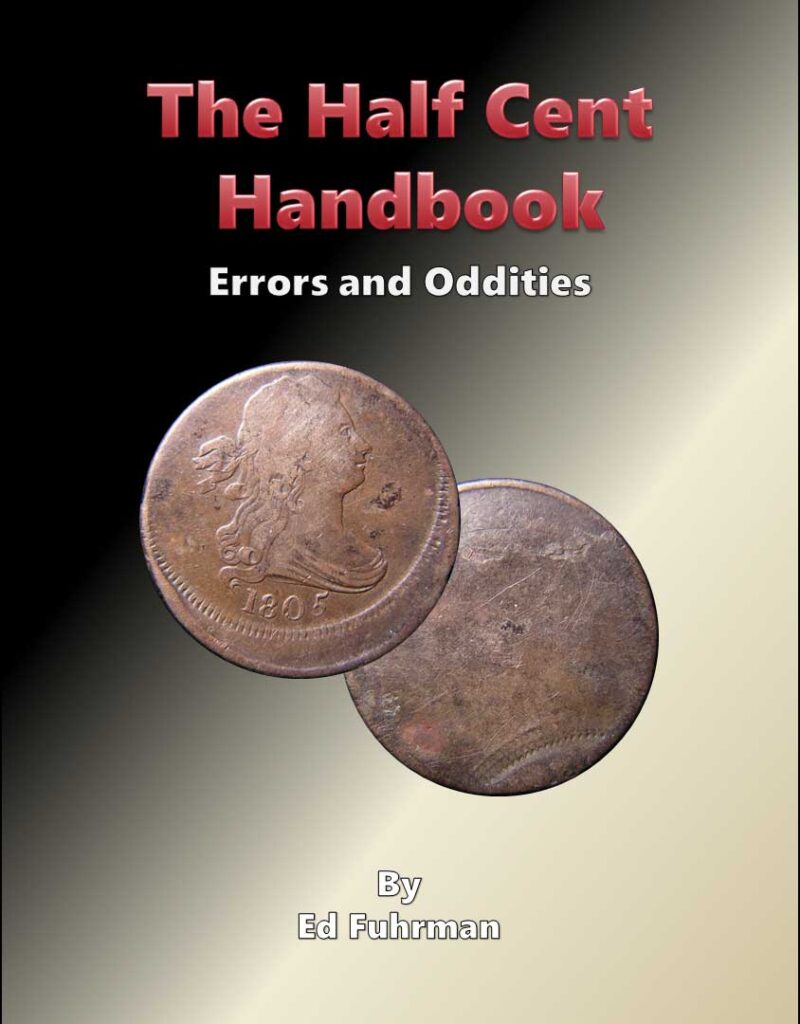
Ed Fuhrman, 2022.
This is the fourth volume in a series of six books written on U.S. Half Cents.
This book is over 180 pages and covers all types of Half Cent mint errors. Everything from minor planchet errors to major striking errors are covered in great detail. Examples of some of the most spectacular mint errors are shown. Each mint error is broken down by category and full explanations are given describing how each error occurs. Everything is laid out in a clear and concise manner with full color photos. The book is hard cover, full color, smyth sewn binding, and top quality in every way. To my knowledge, this is the first book ever written and dedicated exclusively to the study of Half Cent mint errors.
To obtain copies contact Ed Fuhrman: Guitarman68@optonline.net
William R. Eckberg, 2019. Published by Early American Coppers, Inc.
A highly readable and very useful overview of the subject, with a nice balance of historical background and technical (die variety) discussion. Complete with full color photography.
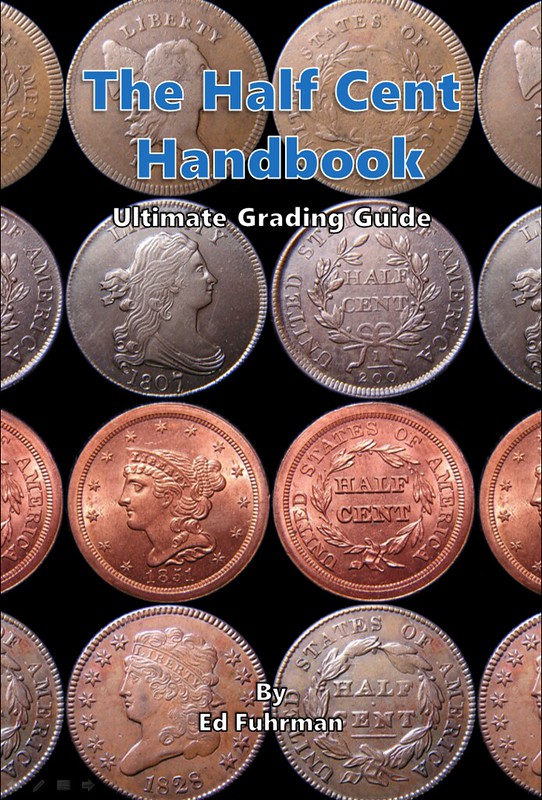
Ed Fuhrman, 2023.
This is the fifth volume in a series of six books written on U.S. Half Cents.
This book has a soft cover with a spiral binding and is designed as an affordable, lightweight, pocket-sized guide (6″X9″ format) that collectors can carry with them to coin shows. It can help any level collector quickly and easily grade any Half Cent they come across using the EAC method of grading. The guide uses photos from the grading sections of my first three hardcover books and takes you step-by-step through the process how to arrive at a proper grade for any Half Cent. The book contains over 500 clear full color photos to assist you in learning to grade.
To obtain copies contact Ed Fuhrman: Guitarman68@optonline.net
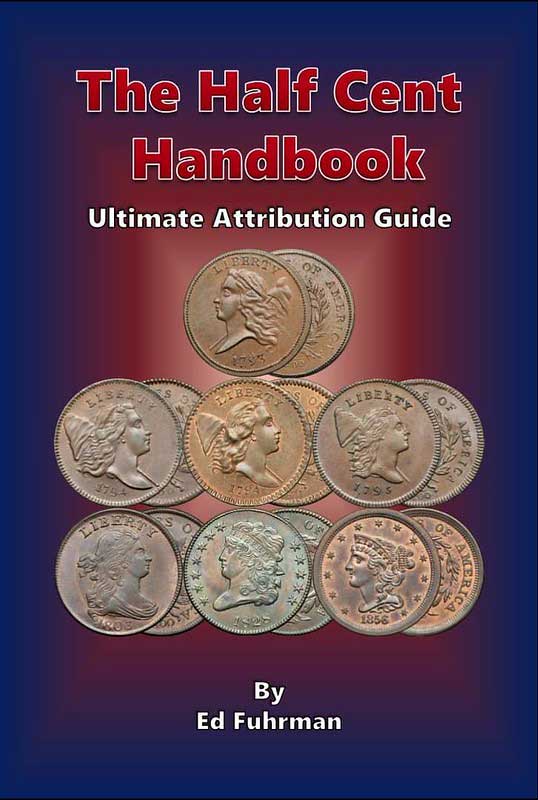
Ed Fuhrman, 2023.
This is the sixth volume in a series of six books written on U.S. Half Cents.
This book has a soft cover with a spiral binding. It is designed as an affordable and lightweight pocket-sized guide (6″X9″format) that collectors can carry. It will help collectors of all levels quickly and easily attribute the die variety of any United States Half Cent minted from 1793-1857. This book uses photos and specific descriptions to guide you step by step through the process of attributing any Half Cent. The book contains hundreds of clear full color photos to assist you in the attribution process.
To obtain copies contact Ed Fuhrman: Guitarman68@optonline.net
W.C. Noyes, 2014. Digital Dynamics, Ann Arbor, MI.
The latest edition of Penny Prices. This book also gives Noyes’ advice for collectors of early copper.
J.H. Robinson, 2011
“CQR” is a good guide to the complex pricing structure of large and half cents. It also contains Robinson’s advice for collectors. Note that the 20th edition is the final edition as CQR is no longer published.
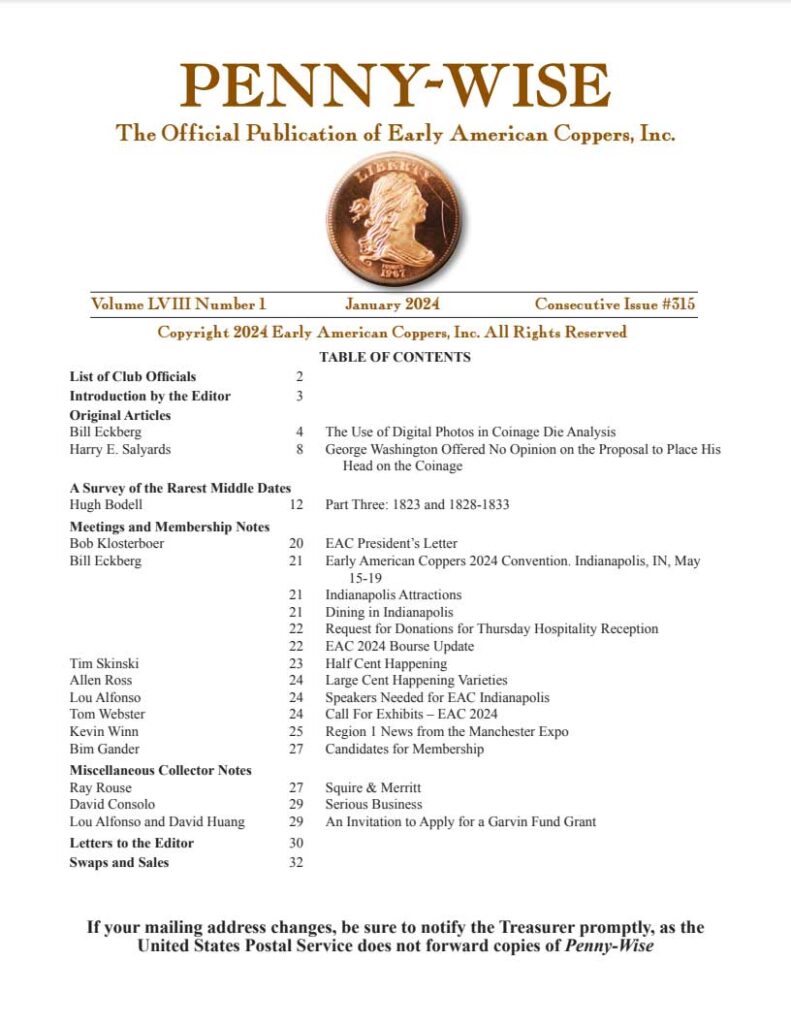
The Official Journal of Early American Coppers.
This is the official journal for EAC. Well-respected among numismatic journals in the United States, it has won a number of awards from the Numismatic Literary Guild under the editorship of Harry E. Salyards (1986 to present). It has been published without fail every two months, September 1967 through July 2011. Beginning with July 2011, it will be published quarterly in July, October, January, and April. Each issue includes a mixture of original research articles, records of national and regional meetings of club members, and more informal “Collector Notes,” in which both veterans and novices share their copper-collecting experiences. There is also a “Swaps and Sales” section, where members may post coins for sale or trade. All members receive P-W, as it is affectionately called, as a benefit of membership. All issues of P-W, back to the first issue in the fall of 1967, are available to members on a DVD that is updated every two years. Issues published since the last DVD update are available in the “Members Only” section of the EAC website (which can be accessed by logging in at the top of the eacs.org main page).
Make the check payable to:
Early American Coppers Gifting Fund
Mail the check to:
Bob Klosterboer
10055 North Palasades Blvd
Fountain Hills, Arizona 85268
Include a note with the address you want the book shipped to (if different than the address on your check).